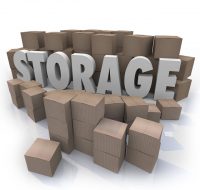We are asked many times about the shelf life of permanent magnets and just how long neodymium magnets last. The simple answer is, no, there is no shelf life; however, as all things go with magnets, it is not that simple.
The Magnetic Lifespan
A shelf life indicates when a product is no longer able to perform its intended function, or it becomes unhealthy or dangerous. In order for a permanent magnet to no longer be able to perform its intended function, it would need to lose part or all of its ability to create a net external field. The degree of this loss would dictate the magnet’s ability to perform.
 So, if a magnet was left alone on a shelf with no external influences, only “Magnetic Creep” could potentially cause the magnet’s field to be reduced. “Magnetic Creep” occurs when the magnet starts to yield to self-demagnetizing forces. Generally this takes a long time to realize even a small change for a well-designed magnet not under any other stresses. What is a long time? Years to decades, depending upon the magnetic alloy.
So, if a magnet was left alone on a shelf with no external influences, only “Magnetic Creep” could potentially cause the magnet’s field to be reduced. “Magnetic Creep” occurs when the magnet starts to yield to self-demagnetizing forces. Generally this takes a long time to realize even a small change for a well-designed magnet not under any other stresses. What is a long time? Years to decades, depending upon the magnetic alloy.
However, in the real world, we have to store, handle, package, count, etc. magnets, and they can experience other negative factors. What factors would a magnet experience in storage that would negatively impact its ability to produce a net field?
Volume Loss, External Demagnetizing Fields, and Heat
Volume Loss
Volume loss is the most prominent factor, and this could be from corrosion or impacts where actual chips or portions of the magnet are removed. If the magnet is smaller, the field it can produce is lower. As it is important to protect magnets in their intended application, they also must be protected during storage.
To protect from corrosion, always keep the magnets in a clean, dry environment. It is preferable to keep them in the magnet vendor’s packaging. Often, magnets are supplied attracting in rows and sometimes with spacers. The magnets should also be kept in this vendor-supplied configuration to eliminate the potential for volume loss due to handling where chipping can occur.
External Demagnetizing Fields
Permanent magnets are magnetized with a very strong magnetic field. Sometimes, magnets can encounter magnetic fields from other magnets which may be damaging. This is especially true when magnets with several different part numbers are stored in the same area. Larger, stronger magnets can create a field which partially demagnetizes smaller magnets. Some magnet alloys are more susceptible to this. Some grades of Alnico (Aluminum Nickel Cobalt) and Ceramic (Strontium Ferrite) are the most susceptible alloys.
Steps to mitigate the impact of external magnetic fields:
- Keep the magnets in the vendor-supplied packaging
- Keep the magnets attracting in a row, and where the rows are attracting
- Keep packages and dunnage of unlike magnets separated
Below is a table that illustrates the general tolerances of the common commercial magnet alloys to corrosion, impacts, and external magnetic fields.
* Grade dependent
Heat
Heat will always have an effect on permanent magnets, but most storage and transportation methods will never reach a sufficient temperature to cause an irreversible loss in a magnet. However, high temperatures will accelerate negative effects from corrosion and demagnetizing fields. It is a good practice to store magnets in an environment that a human would find comfortable.
Conclusion
If you have older magnets, or magnets that have had a questionable storage history, steps can be taken to evaluate the inventory.
Please contact a Dura Magnetics Customer Service Representative to discuss your storage options, as well as handing methods, within your supply chain.

 So, if a magnet was left alone on a shelf with no external influences, only “Magnetic Creep” could potentially cause the magnet’s field to be reduced. “Magnetic Creep” occurs when the magnet starts to yield to self-demagnetizing forces. Generally this takes a long time to realize even a small change for a well-designed magnet not under any other stresses. What is a long time? Years to decades, depending upon the magnetic alloy.
So, if a magnet was left alone on a shelf with no external influences, only “Magnetic Creep” could potentially cause the magnet’s field to be reduced. “Magnetic Creep” occurs when the magnet starts to yield to self-demagnetizing forces. Generally this takes a long time to realize even a small change for a well-designed magnet not under any other stresses. What is a long time? Years to decades, depending upon the magnetic alloy.